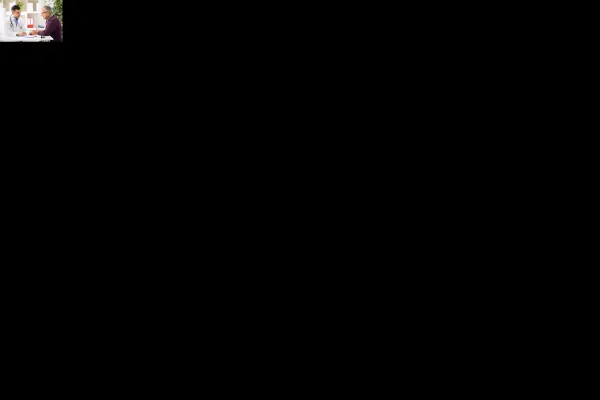Gastroenterology Coding Alert
Simplify Esophageal Dilation Coding With a Few Quick Tips
You must know the extent of the scope to select the right code.
If your gastroenterologist performs dilation during endoscopy to overcome strictures or obstructions in the upper GI tract, you have many codes to report the procedure — but not all of them are straightforward.
Get to know a few simple tips that will help streamline your dilation coding processes.
Choose From Esophagoscopy or EGD Codes Depending on Extent of Scope
If your gastroenterologist performed balloon dilation to treat a stricture, you will need to look at various factors to land the right code to report the procedure. Some of the aspects that you will need to look at include:
- The extent to which your gastroenterologist visualized the upper GI tract using the endoscope,
- The diameter to which the balloon was inflated, and
- The condition that required dilation.
If your clinician performed balloon dilation and visualized only the esophagus, then you need to report the procedure using 43220 (Esophagoscopy, flexible, transoral; with transendoscopic balloon dilation (less than 30 mm diameter)). If your gastroenterologist visualized the stomach and beyond the pyloric channel into the duodenum and/ or the jejunum, then you should instead report the procedure using the code 43249 (Esophagogastroduodenoscopy, flexible, transoral; with transendoscopic balloon dilation of esophagus (less than 30 mm diameter)).

Heads up: The above-mentioned codes can only be used when balloon dilation is done up to a diameter of 30 mm. If your gastroenterologist dilates the balloon to a diameter equal or greater than 30 mm, as is done in the case of a person suffering from achalasia (to break open the muscle fibers of the lower esophageal sphincter), you need to report this procedure with one of the following two codes, depending on the extent to which your clinician inserted the scope:
- 43214 (Esophagoscopy, flexible, transoral; with dilation of esophagus with balloon (30 mm diameter or larger) (includes fluoroscopic guidance, when performed))
- 43233 (Esophagogastroduodenoscopy, flexible, transoral; with dilation of esophagus with balloon (30 mm diameter or larger) (includes fluoroscopic guidance, when performed)).
Example: Your gastroenterologist decides to perform a dilation procedure for a patient suffering from dysphagia due to GERD not responding to previously prescribed proton pump inhibitors. Your gastroenterologist performs an esophagoscopy along with balloon dilation to relieve the dysphagia symptoms that the patient is experiencing.
Your clinician dilates the balloon to a maximum diameter less than 30 mm diameter and advances the scope into the stomach to check this area for any abnormalities. He notes that there are no abnormalities in the stomach of any significance.
What to report: Since your clinician advanced the scope into the stomach, you may need to report an EGD code and not the esophagoscopy balloon dilation code, with the procedure using 43249, if the scope was advanced to also visualize the duodenum, says Glenn D. Littenberg, MD, MACP, FASGE, AGAF, a gastroenterologist and former CPT® Editorial Panel member in Pasadena, California. “If the scope simply enters the stomach, and perhaps is retroflexed to view the gastroesophageal junction from within the stomach, 43220 code applies.”
Capture These Codes for Guide Wire Dilations
If there is difficulty passing the dilators and the physician cannot accurately ascertain the correct placement for overcoming strictures, then the clinician might use guide wires prior to the use of a dilator. These guide wires might be placed using an endoscope to guide placement. In such a scenario, you will not use the above-mentioned dilation codes, but will instead choose other CPT® codes to report the procedure.
With any esophageal dilation procedure, there is the significant risk of perforation of the esophageal walls, so your gastroenterologist will often use endoscopy during the procedure to help reduce the risk of complications. Some types of dilation can be done with the scope in place and in others the scope is removed after a guide wire is inserted and before dilation is performed.

You will again have to determine the extent to which the scope was advanced to arrive at the right code for the procedure. You’ll likely report 43226 (Esophagoscopy, flexible, transoral; with insertion of guide wire followed by passage of dilator(s) over guide wire) if only the esophagus (and perhaps proximal stomach) was visualized, and choose 43248 (Esophagogastroduodenoscopy, flexible, transoral; with insertion of guide wire followed by passage of dilator(s) through esophagus over guide wire) if your gastroenterologist advanced the scope beyond the pyloric channel.
Coding tip: If you see the word “American” or “Savary” to describe the dilator that is used, those terms are indicators that your gastroenterologist used a guide wire prior to the dilation procedure.
Don’t Report Dilation With These Procedures
When your clinician performs a dilation to overcome an obstruction or a stricture and then proceeds to perform other endoscopic procedures, be sure to check National Correct Coding Initiative (CCI) edits to check whether the procedures are bundled. Also, CPT® definitions do not allow you to report dilation procedures when your clinician performs placement of an esophageal stent or performs an ablation.
Therefore, you cannot report dilation codes such as 43214 or 43220 when your clinician performs these procedures in the same session:
- 43212 (Esophagoscopy, flexible, transoral; with placement of endoscopic stent (includes pre- and post-dilation and guide wire passage, when performed))
- 43229 (…with ablation of tumor(s), polyp(s), or other lesion(s) (includes pre- and post-dilation and guide wire passage, when performed))
Settle for These Codes to Report Unguided Dilations
When your gastroenterologist uses a dilator without the aid of endoscopy or a guide wire, or performs a diagnostic endoscopy prior to the use of a dilator, you’ll report the procedure using 43450 (Dilation of esophagus, by unguided sound or bougie, single or multiple passes).
If your gastroenterologist performed an endoscopy prior to the procedure, then you need to report it separately using 43235 or 43200 (Esophagoscopy, flexible, transoral; diagnostic, including collection of specimen(s) by brushing or washing, when performed (separate procedure)) depending on the extent of the visualization. If a biopsy or other endoscopic therapeutic technique was performed, then you will choose the appropriate code from the Esophagoscopy or Upper Gastrointestinal Endoscopy family of codes.
Coding Tip: If you see the use of a “Maloney” dilator, then you can be certain that your gastroenterologist performed an unguided dilation (43450), and you’ll choose one of the above-mentioned codes to report the endoscopy portion of the procedure.
In the rare case that your gastroenterologist performs dilation over a guide wire that was not placed using an endoscope, you will need to report the procedure with 43453 (Dilation of esophagus, over guide wire).
Related Articles
Gastroenterology Coding Alert
- Dilation Coding:
Simplify Esophageal Dilation Coding With a Few Quick Tips
You must know the extent of the scope to select the right code. If your [...] - Tube Coding:
Differentiate Tube Placement, Replacement, and Maintenance for Proper Coding
Hint: Look for inclusion of fluoroscopic guidance before selecting a code. The use of gastrointestinal [...] - Reimbursement:
Correct These Billing Issues to Ring in 2022 Without Worries
Learn how to maximize your revenue before the calendar turns to 2022. As the end [...] - You Be the Coder:
Understand the Diagnosis Code for Preprocedural Exam
Question: A patient who was scheduled for a gall bladder surgery presented for a pre-op [...] - Reader Questions:
Follow These Guidelines for Free Sample Distribution
Question: In the past, gastroenterologists in our practice have frequently supplied free samples to patients. [...] - Reader Questions:
Check the Calendar for Global Period Specs
Question: The CPT® surgery guidelines state that the surgical package includes one related E/M encounter [...] - Reader Questions:
Get the Scoop on Reporting Vaccine Side Effects
Question: How do we code an adverse reaction to a COVID-19 vaccine that was noted [...]




